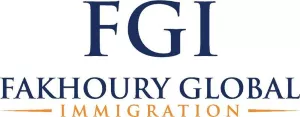On October 30, the Biden administration released Executive Order 14074, "Safe, Secure, and Trustworthy Development and Use of Artificial Intelligence."1 The goal of this ambitious directive is to promote the safe development and use of AI and other critical and emerging technologies.2
In recognizing the critical role of foreign talent with AI expertise, the Biden administration's executive order has launched a significant effort to make it easier for such talent to work and live in the United States. By attracting and retaining experts in AI from all over the world, the U.S. aims to retain and expand its leading role in the creation of emerging technologies.
Among other key elements, the Executive Order (EO) identifies the need for highly skilled talent as essential to the development of AI technologies. The EO recognizes that this involves both the development of talent in the United States as well as attracting foreign experts in AI and other emerging technologies to the United States. Section 5 of the EO specifies multiple initiatives to streamline and modernize various legal immigration processes to make it easier for foreign AI talent to relocate and remain in the United States. These include:
Streamlining the Consular Visa Process
Within 90 days of the issuance of the EO, the Departments of State and Homeland Security are to:
- streamline processing times for visa petitions and applications for foreign national to work, study, or conduct research on AI or other critical and emerging technologies.
- facilitate continued availability of visa appointments in sufficient volume for foreign nationals with expertise in AI or other critical and emerging technologies.
Changes to Visa Programs
- Within 180 days of the issuance of the EO, the Department of
Homeland Security is tasked to initiate changes to modernize
immigration pathways for foreign nationals with expertise in AI or
other emerging technologies, including in the O-1A, EB-1, and EB-2
visa categories.
- Foreign applicants with AI expertise, such as computer scientists with an advanced degree, will be able to petition as aliens of extraordinary ability in sciences and/or business for the nonimmigrant O-1A category.
- Foreign applicants with AI expertise will be able to petition for permanent residence as aliens of extraordinary ability (EB-1A), or exceptional ability (i.e., advanced degree holders) in the EB-2 category. Startup founders of companies in AI and other critical and emerging technologies will also be able to petition using the International Entrepreneur Rule.
- Direct the Department of Homeland Security to continue efforts to modernize the H-1B program, including by experts in AI and other critical and emerging technologies and consider initiating a rulemaking to enhance the process for noncitizens, including experts in AI and other critical and emerging technologies and their spouses, dependents, and children, to adjust their status to lawful permanent resident.
Improving the Exchange Visitor (J-1) Process
The Department of State is tasked to improve the J-1 process so that foreign workers with expertise in AI or other emerging technologies can more easily apply to work in the U.S.
Within 120 days of the issuance of the EO, the Department of State will:
- consider initiating rulemaking to establish new criteria to designate countries and skills on the Department of State's Exchange Visitors Skills List as it relates to the 2-year foreign residence requirement.
- consider updating the 2009 Revised Exchange Visitor Skills List to include more AI-related skills,
- consider a domestic visa renewal program to enable qualified applicants, including those with expertise in AI and critical and emerging technologies, to continue to work in the US.
Within 180 days:
- consider initiating rulemaking to expand the categories of nonimmigrants who qualify for domestic visa renewal to include J-1 research scholars and F-1 STEM students.
- establish a program to identify and attract foreign experts in AI and other critical and emerging technologies to inform them of possible nonimmigrant and immigrant visa options so that they can work in the U.S. as well as potential expedition of their visa petitions and applications.
Schedule A Occupations
Within 45 days, the Department of Labor is:
- tasked with considering updates to the Schedule A list of occupations – which mainly includes aliens in the sciences and arts, performing arts, physical therapists, and nurses – to include certain foreign workers with expertise in AI and other STEM-related occupations.3
- tasked with publishing a request for information (RFI) to solicit public input to identify AI and other STEM-related occupations as well as other occupations for which there is an insufficient number of ready, willing able, and qualified United States workers.
- If Schedule A is extended to include AI and other emerging technologies, this could obviate the need to file a NIW (National Interest Waiver) application for this set of skilled AI foreign talent. Schedule A occupations are exempt from the Permanent Labor Certification process so this would speed up the process of securing permanent residence for covered foreign workers.
Various Talent Attraction Initiatives
- Publication by the Department of Homeland Security of informational resources to attract and retain AI talent including a comprehensive guide for experts in AI and other critical technologies to understand their options for working in the U.S. to be published on AI.gov.
- The Departments of State and Homeland Security are to use discretionary authority to support and attract foreign nationals with expertise in AI and other critical and emerging technologies seeking to work in the U.S.
Footnotes
1. The text of the Executive Order can be found at: Executive Order on the Safe, Secure, and Trustworthy Development and Use of Artificial Intelligence | The White House
2. The term "critical and emerging technologies" means those technologies listed in the February 2022 Critical and Emerging Technologies List Update issued by the National Science and Technology Council (NSTC), as amended by subsequent updates to the list issued by the NSTC. Specifically, NSTC has identified the following as critical and emerging technologies: Advanced Computing, Advanced Engineering Materials, Advanced Gas Turbine Engine Technologies, Advanced Manufacturing, Advanced and Network Sensing and Signature Management, Advanced Nuclear Energy Technologies, Artificial Intelligence, Autonomous Systems and Robotics, Biotechnologies, Communication and Networking Technologies, Directed Energy, Financial Technologies, Human-Machine Interfaces, Hypersonics, Networked Sensors and Sensing, Quantum Information Technologies, Renewable Energy Generation and Storage, Semiconductors and Microelectronics, and Space Technologies and Systems. See NTSC, Critical and Emerging Technologies List Update (2022), https://www.whitehouse.gov/wp-content/uploads/2022/02/02-2022-Critical-and-Emerging-Technologies-List-Update.pdf
3. A list of Schedule A occupations can be found in the Federal Register: https://www.ecfr.gov/current/title-20/chapter-V/part-656/subpart-B/section-656.5
The content of this article is intended to provide a general guide to the subject matter. Specialist advice should be sought about your specific circumstances.

